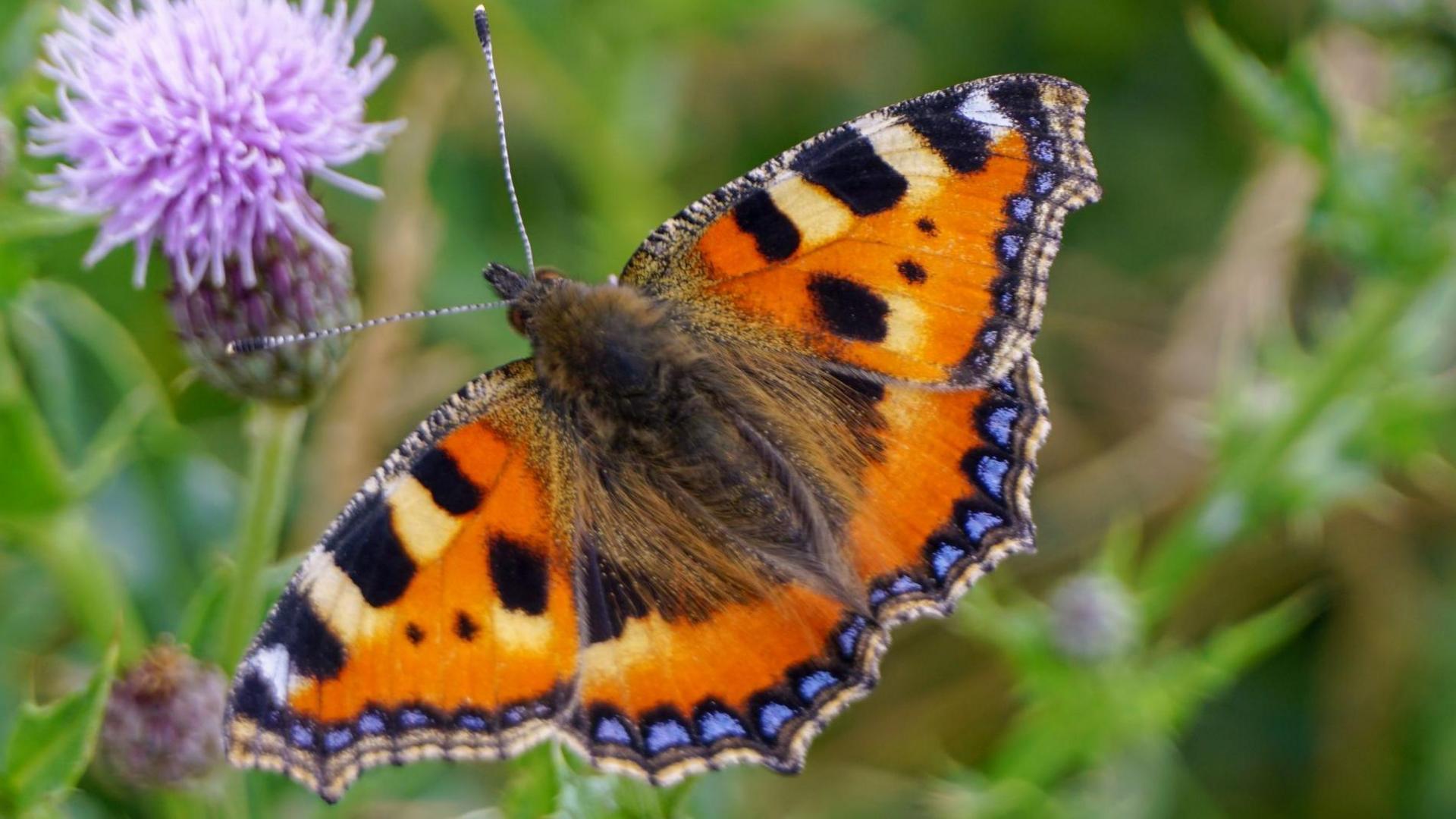Marsh fritillary butterfly bucks declining trend in NI
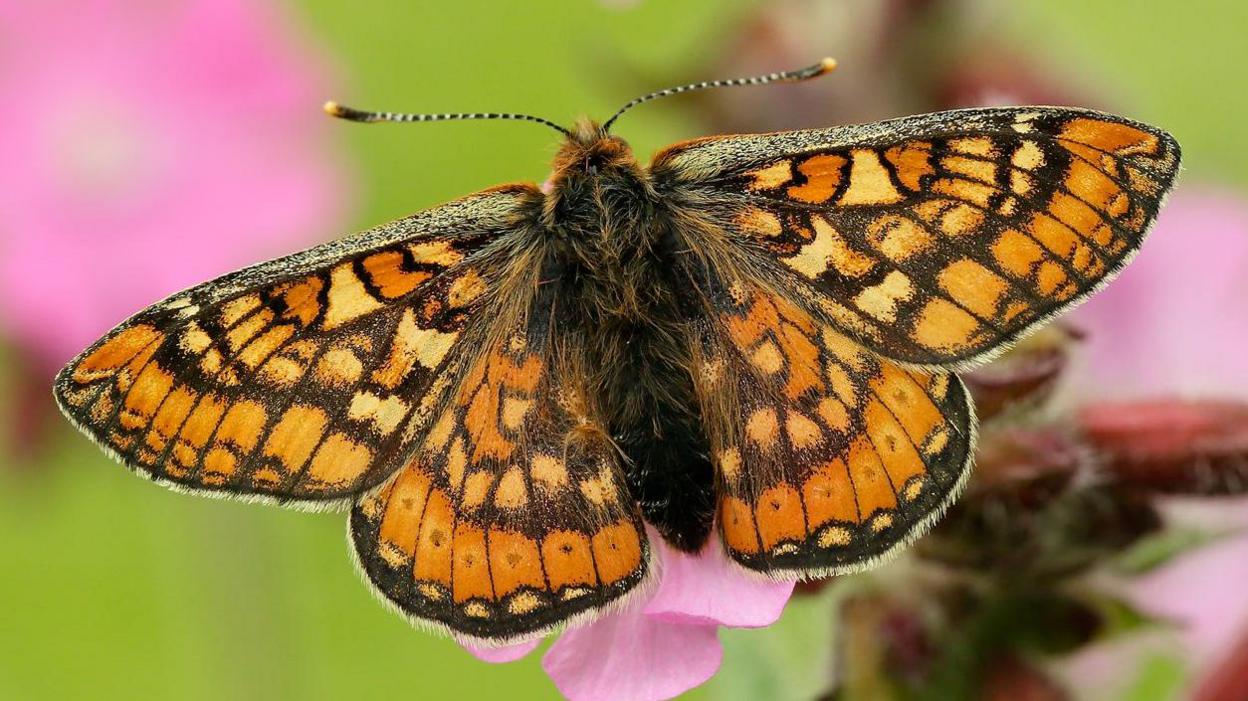
The marsh fritillary is now classed as stable in Northern Ireland, but still declining
- Published
In a year when a “butterfly emergency” has been declared, one species in Northern Ireland is bucking the trend.
The marsh fritillary made its presence felt in autumn, when the caterpillars spin striking webs in long grass.
A total of 679 webs were counted across 20 sites in 2024 – an increase of 423 compared to 2023.
But the species is still vulnerable, with the number of sites where it is found across the UK almost halving between 1985 and 2019.

A short spell of dry, clement weather in June may have helped butterflies
The charity Butterfly Conservation is calling for support for agri-environment schemes to increase the grassland habitat the butterfly relies on.
It monitors the species which was once so common in Northern Ireland that, in the 1850s, farmers recorded fields swarming with caterpillars in the autumn.
Like many other butterflies, its numbers have plummeted throughout the 20th century.
The marsh fritillary is now classed as stable in Northern Ireland, but still declining.
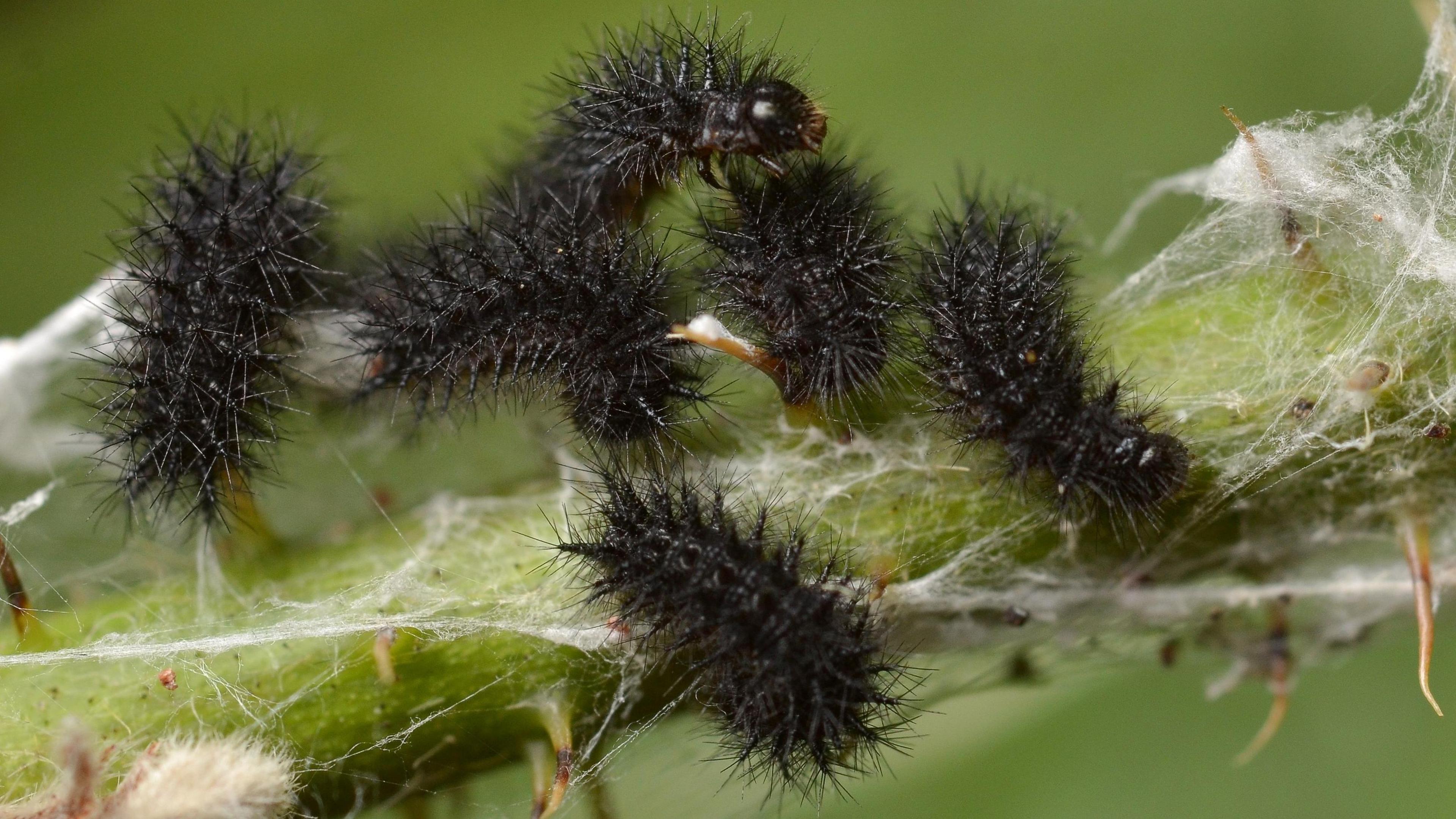
The marsh fritillary caterpillar spins striking webs in long grass
Environmental designations like Area of Special Scientific Interest (ASSI) help protect areas where it may be found.
The butterfly almost exclusively eats the leaves of a plant called devil’s-bit scabious, which has also suffered from habitat loss and changes in farming practices.
In September, thirteen volunteers and two staff from Butterfly Conservation carried out surveys at 20 sites, with recorded numbers more than doubling.
A short spell of dry, clement weather in June is thought to have played a part in the butterfly’s surge, along with site management.
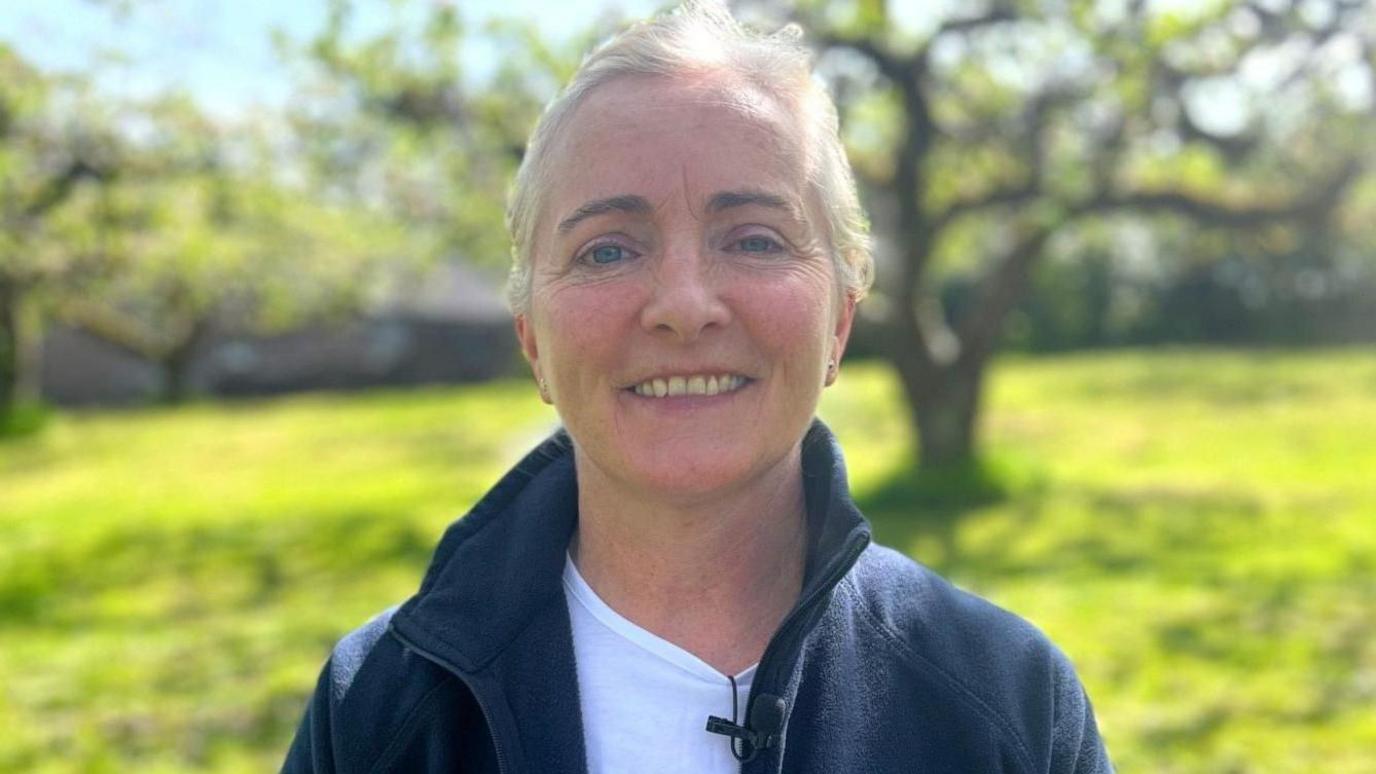
Conservation manager Rose Cremin said the government needs to continue rewarding farmers
The charity’s Northern Ireland Conservation Manager Rose Cremin said the results were “a good sign” that work to protect habitats was delivering.
“Now we need the government to continue to reward farmers for farming with nature," she said.
“We urge the government to put more money into agri-environment schemes aimed at not just maintaining but increasing the grassland habitat which can provide a home for marsh fritillary and a host of other species."
The Northern Ireland Environment Agency (NIEA) funds the monitoring work.
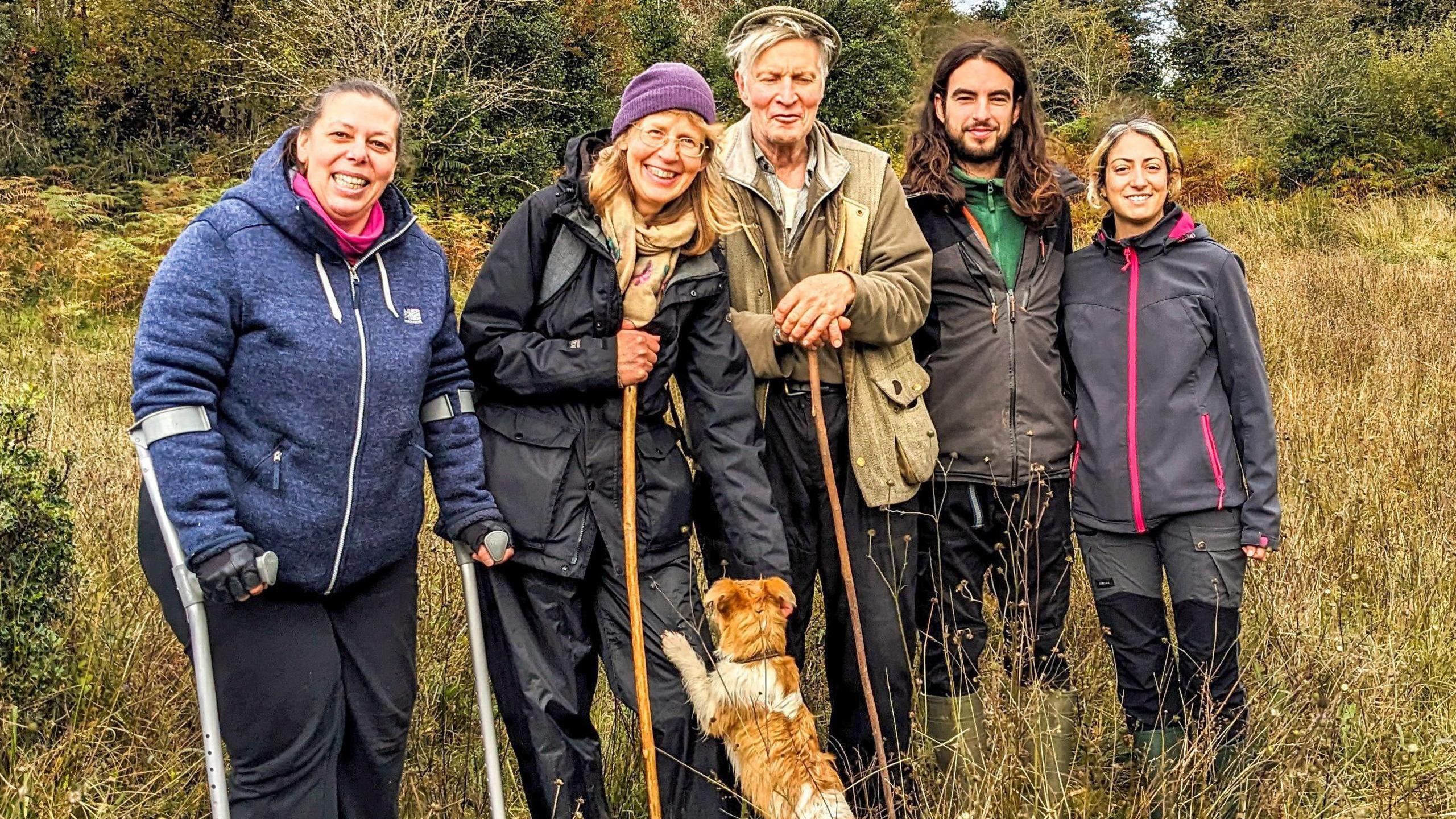
In September, thirteen volunteers and two staff from the charity Butterfly Conservation carried out surveys at 20 sites, with recorded numbers more than doubling
Pauline Campbell from NIEA said it was “brilliant” to see the butterfly thriving.
“Northern Ireland has a network of sites designated as ASSIs to support marsh fritillary through careful management their preferred habitat," she said.
“The continued management of our species-rich grasslands which support species such as Marsh Fritillary is also delivered through agri-environment schemes such as Environmental Farming Scheme.
“EFS supports farmers and land managers to carry out environmentally beneficial farming practices."
Related topics
- Published18 May 2024
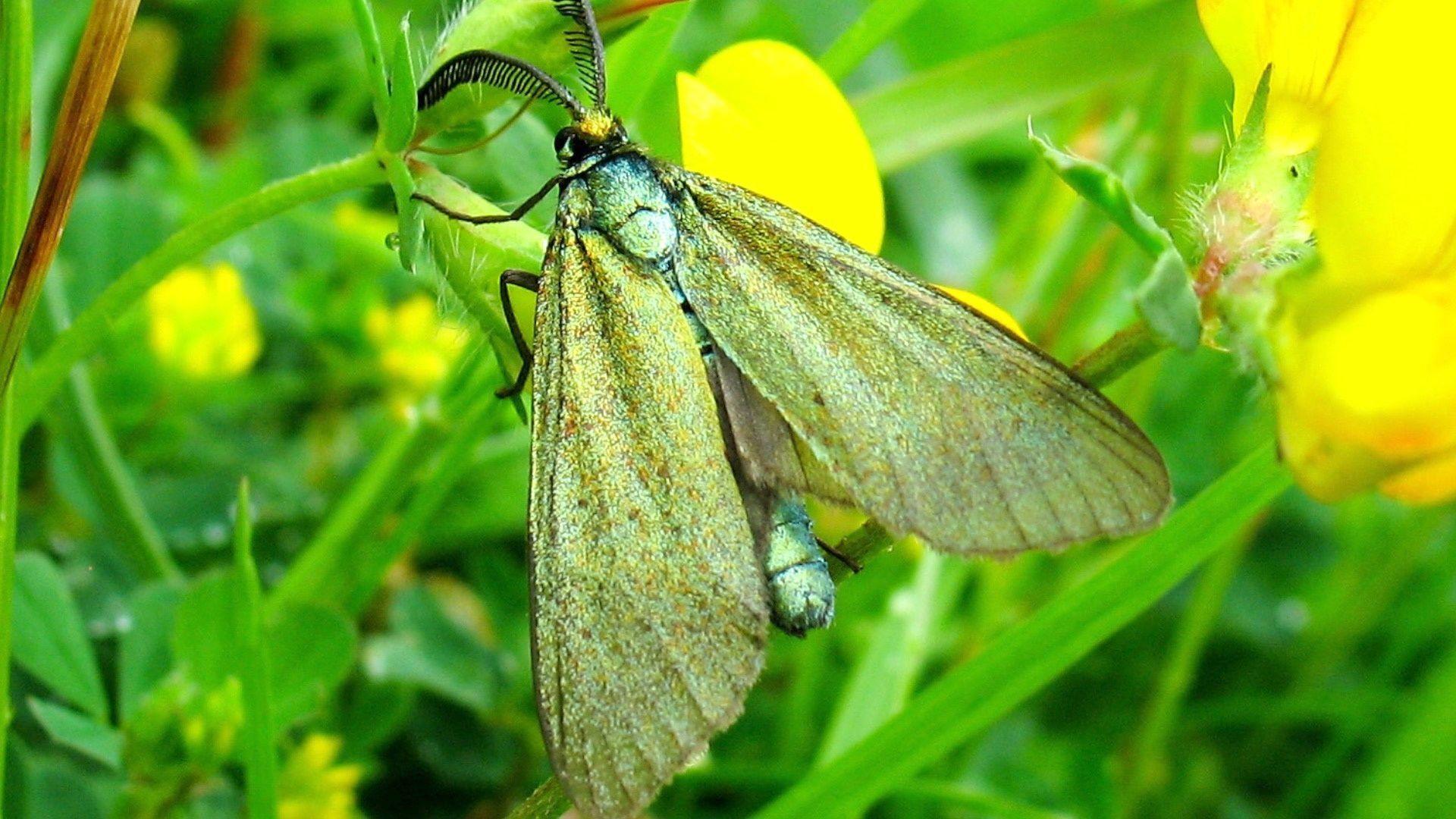
- Published18 September 2024
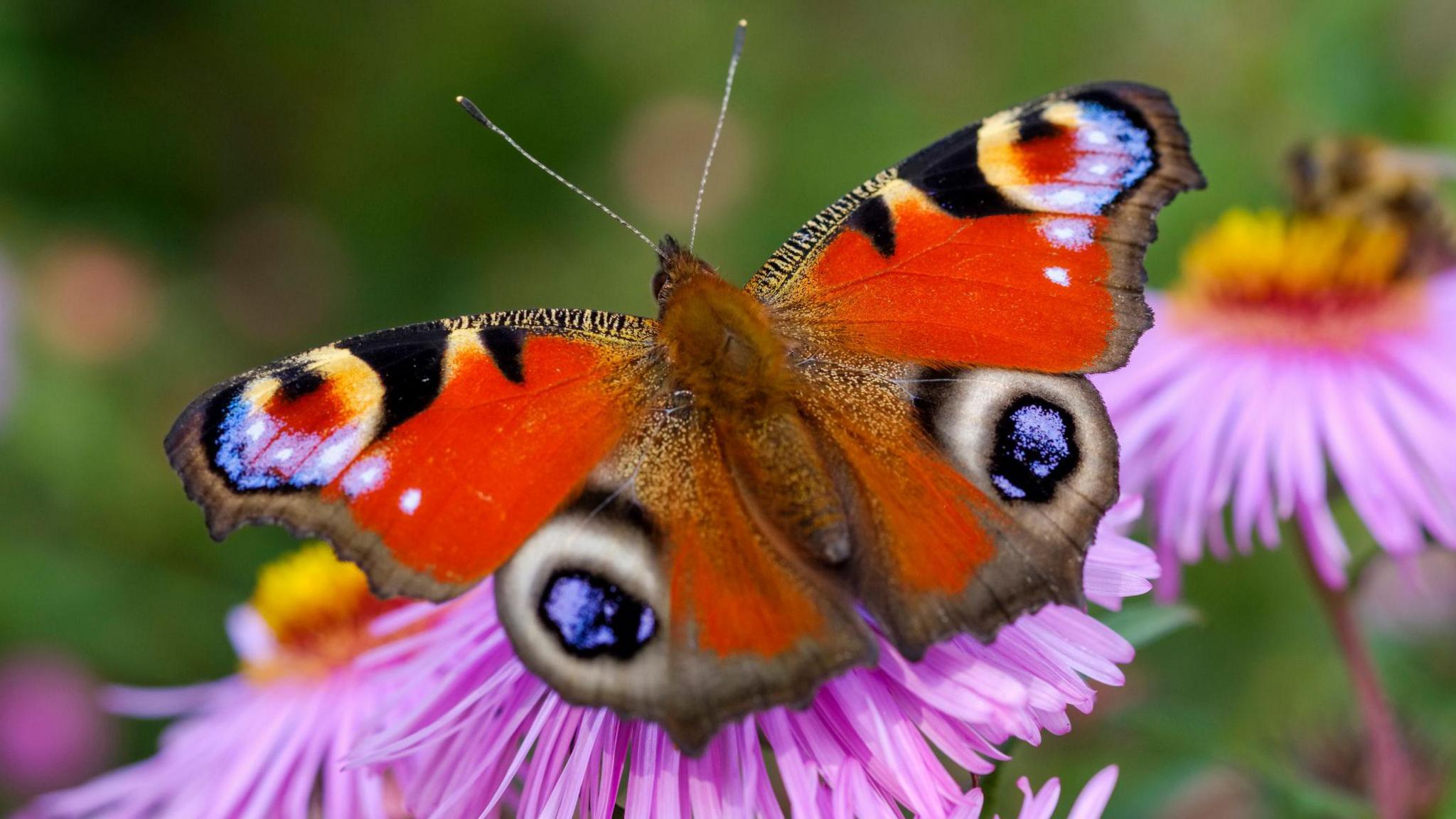
- Published3 August 2024
